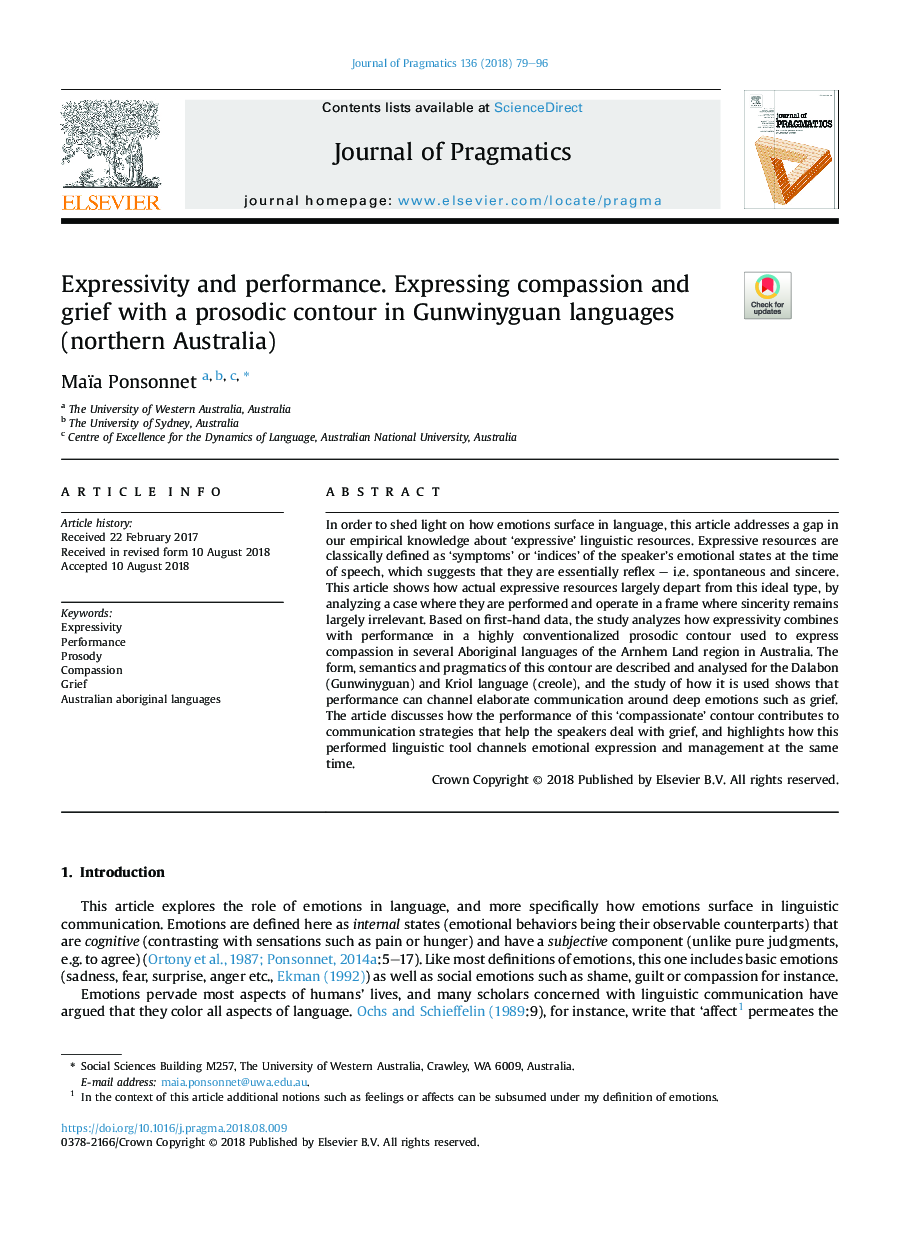| Article ID | Journal | Published Year | Pages | File Type |
|---|---|---|---|---|
| 10134432 | Journal of Pragmatics | 2018 | 18 Pages |
Abstract
In order to shed light on how emotions surface in language, this article addresses a gap in our empirical knowledge about 'expressive' linguistic resources. Expressive resources are classically defined as 'symptoms' or 'indices' of the speaker's emotional states at the time of speech, which suggests that they are essentially reflex - i.e. spontaneous and sincere. This article shows how actual expressive resources largely depart from this ideal type, by analyzing a case where they are performed and operate in a frame where sincerity remains largely irrelevant. Based on first-hand data, the study analyzes how expressivity combines with performance in a highly conventionalized prosodic contour used to express compassion in several Aboriginal languages of the Arnhem Land region in Australia. The form, semantics and pragmatics of this contour are described and analysed for the Dalabon (Gunwinyguan) and Kriol language (creole), and the study of how it is used shows that performance can channel elaborate communication around deep emotions such as grief. The article discusses how the performance of this 'compassionate' contour contributes to communication strategies that help the speakers deal with grief, and highlights how this performed linguistic tool channels emotional expression and management at the same time.
Related Topics
Social Sciences and Humanities
Arts and Humanities
Language and Linguistics
Authors
Maïa Ponsonnet,
